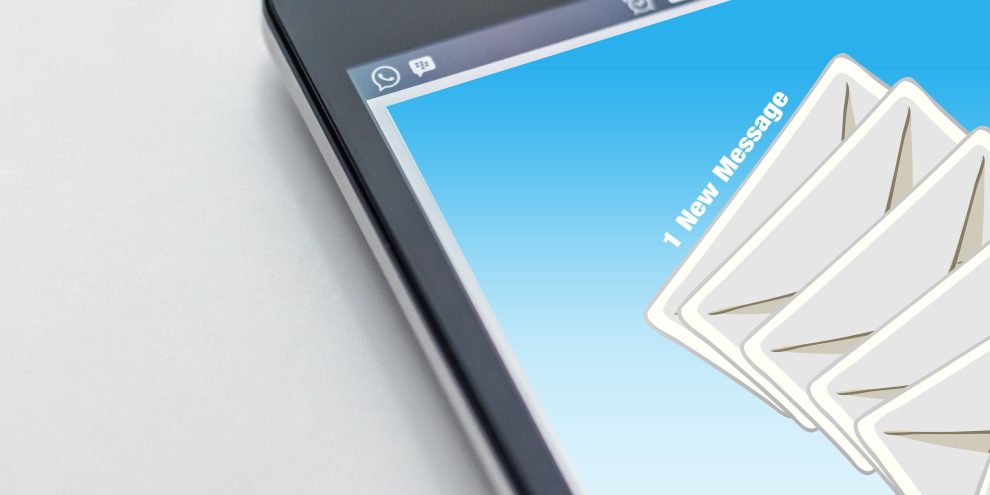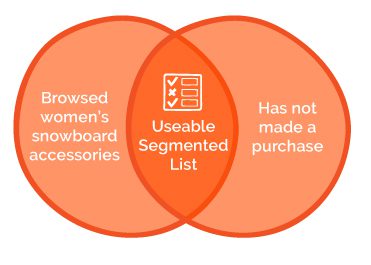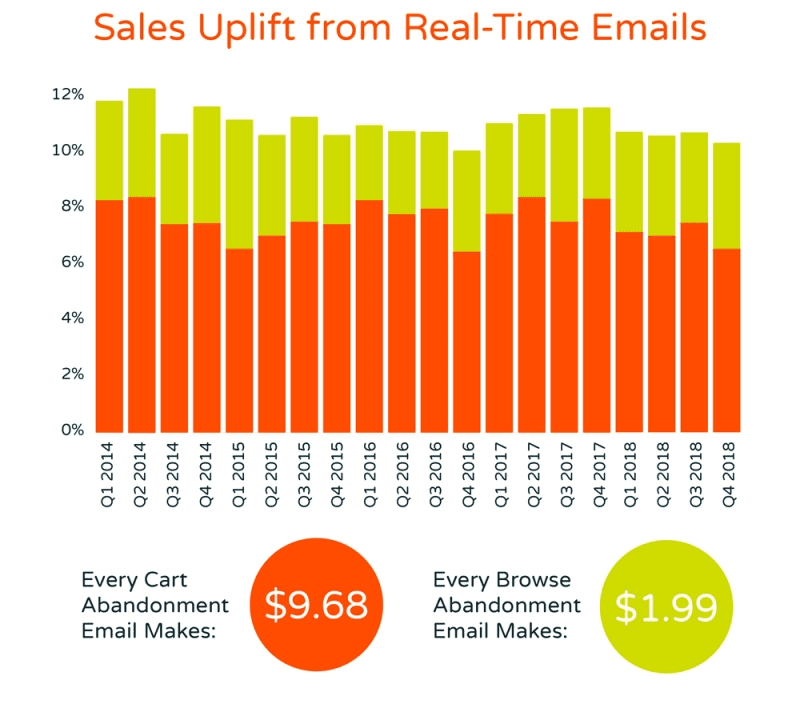Your database is growing, your emails look great, and you make it into recipients’ inboxes. You even have a decent open rate.
And yet, revenue from your email channel just isn’t growing.
If that sounds familiar, there’s no need to panic.
Here, we’ll dive into ten reasons your email marketing strategy isn’t generating revenue – and how you can turn the situation around. We’ll also touch on why your emails might be contributing to more sales than you think.
1. You don’t have an engaged email list
Increasing visitor identification rate is key to increasing sales uplift from emails.
The more shoppers you can recognize, the more opportunities you have to follow up with relevant email content.
Strategically placed data capture forms can be combined with targeted popovers to increase your count of engaged subscribers, giving you a better shot at having a more effective email marketing campaign.
Remember to be mindful of timing. Give shoppers the opportunity to view your website so they know what you have to offer before the popover appears.
When Feel Good Contacts introduced targeted popovers with personalized offers, the company saw a 333% increase in sign-ups month-over-month, and a significant portion of subscribers went on to make a purchase.
2. You’re sending generic marketing emails
Email marketing remains consumers’ preferred way to be contacted by brands. So it’s tempting to adopt a one-size-fits all approach to your email marketing campaign.

But if you’re relying on this “spray-and-pray” approach, you’re almost certainly missing out on incremental revenue. There’s no guarantee that offers will be relevant to customers’ needs, or stimulating enough to drive conversions.
Audience segmentation lets you design very specific messages to help you meet your marketing KPIs. Here’s how it works:
1. Define a group of target customers
2. Send them a message that’s appropriate to their needs
3. Specifically tailor the message to increase conversions
A good first step is to segment your email list based on browse and purchase behavior. This will allow you to customize emails according to shoppers’ interests, life stage and place in the buying journey when creating a successful email marketing campaign.

Research by Mailchimp has found that campaigns with basic segmentation achieve a click rate 100.95% higher than non-segmented campaigns.
Here are some simple ways you can slice and dice your email marketing list according to your target audience:
- Shoppers who engaged with certain products or categories. For example, sending a brand-specific newsletter.
- Shoppers who are very engaged on your website, but haven’t purchased yet. Convert these browsers into buyers by sending personalized coupons.
- Lapsed shoppers who have regularly bought from you but haven’t done so for a while. Let them know you miss them and remind them why they love your brand.
- Customers who frequently make a purchase. Keep them updated on new products to keep the customer loyalty going, but don’t bombard them with special offers that will cannibalize their order value.
- Shoppers viewing high value products. Identify shoppers who are viewing your high margin products, and send targeted emails to get them over the line to conversion.
3. Your email content isn’t compelling
If content doesn’t resonate with customers at the moment they open an email, you can’t expect them to click through and convert.

Dynamic email content is the easiest way to cut through the noise. Images and messaging are automatically personalized at the moment of open, based on the customer’s interests, their location, the date and time, or a combination of those.
While segmentation is about sending customers the most appropriate message, dynamic content is about making your email campaigns compelling.
Here are some ways to add dynamic content to bulk and triggered emails in your future campaigns:
- Personalized banners: A dynamic banner allows you to show each customer the image that’s most likely to spark their interest.
- Product recommendations: Product suggestions can be based on individual behavior, crowdsourced data, business priorities, or a combination of all three.
- Personalized coupons: Coupons can follow shoppers from emails to the website to maximize exposure and redemption rates.
- Location and weather-based content: For instance, basing product recommendations on the local weather, or including a real-time weather forecast.
Marketers can also leverage real-time content to drive urgency, build trust, and encourage those all-important conversions.
- Animated countdown timers: These can be used across channels to build excitement and let customers know about important dates.
- Popularity messaging: Highlights trending items to build excitement and increase trust in your products.
- Social proof: We found that 61 percent of customers look for product reviews when making a purchase, while more than half (56 percent) find star ratings helpful. Pull star ratings into product emails to reduce purchase hesitation.
4. You aren’t sending real-time emails
Promotional emails are a great way to stay on shoppers’ radar, and can become effective email marketing campaigns when done right.

Triggered emails take this to the next level by treating customers as individuals, sending them messages based on an action they’ve just taken.
Customers who raise a certain signal (such as abandoning a shopping cart) are automatically sent an email – or series of emails – that encourages them to take the next action (such as completing a purchase). This helps you get content in front of customers at the moment they’re most engaged.
When marketers send both abandoned cart and abandoned browse emails, sales uplift can exceed 10%.

Figures from Fresh Relevance clients, Q4 2018
Other common triggered emails include:
- Welcome emails (when a shopper signs up for the newsletter)
- Wishlist emails (when a customer abandons their Wishlist)
- Price drop alerts (when a product they previously browsed has dropped in price)
- Back in stock alerts (when an out-of-stock product they browsed comes back in stock)
- Purchase complete emails (when a customer completes a purchase)
By connecting with customers at these key moments, you can provide them with valuable information and encourage them to take further action.
5. You aren’t actually recovering carts
Even if you’re already sending triggered emails as part of your email marketing, you probably aren’t doing everything in your power to recover lost revenue.

Many companies think they have a cart abandonment system in place, when in fact they’re only dealing with checkout abandonment.
Checkout abandonment is when a user has logged in and started the checkout process. But many users abandon their shopping before that stage.
Our research found that while 12% of visitors will cart a product, only 8% will make it to the checkout, and a mere 4% will complete a purchase.
There are two ways you can combat this:
When a new visitor abandons a cart
Serve an exit intent popover to let the customer know they have items in their basket, and offer to email them a reminder of their cart if they sign up.
When an existing subscriber abandons a cart
You need to be able to recognize the shopper and send them a cart recovery email. If you can only recognize subscribers who are currently logged in, you’re leaving money on the table. Make sure you can identify shoppers who have logged in in the past, using cookies. Also think about shoppers who have never identified themselves on the current device, such as regular visitors who normally use their PC but who are using their smartphone this time. Do you have other methods to recognize these shoppers – for instance, when they click through from a marketing email or submit a form?
6. You’re testing at random or not at all
If you aren’t testing at all, you’re leaving it up to chance that emails will generate revenue.

Think of a test as a survey of your customers. You give them two or more different versions of an email campaign, and their actions tell you which one works best. This lets you make data-driven decisions about future email and website content.
But if you’re randomly testing, there’s no guarantee of contributing to overall revenue goals.
By taking a scientific approach to split testing, marketers can make a demonstrable impact on conversions and sales. There are six steps to implementing a successful test:
- Define your high-level goals (e.g. to generate more revenue from emails)
- Observe the obstacles to achieving those goals.
- Hypothesize how best to overcome those obstacles.
- Split test and measure the results to see if your hypothesis holds true.
- Implement the change or revert to further testing.
7. Email marketing is generating more revenue than you think
There are two variables to consider when measuring email marketing attribution when looking at which marketing channels are generating revenue.
What action did the customer take when they received the email? And how long should the campaign be tracked?

It’s worth thinking carefully about how you weigh up these variables. By placing too much emphasis on direct email clicks, you risk undervaluing the impact of your email marketing.
Data from the DMA’s 2019 Consumer Email Tracking Report shows that customers are saving your emails for later, or taking indirect routes to your products. Consider this longer purchase cycle when tracking campaigns. The action taken as a result of the email may take place hours or even days later.
Give yourself a chance
There’s no “perfect” approach to email marketing. Shoppers won’t always be in buying mode when they open their inbox. And what resonates with customers today might not resonate tomorrow.
But with personalization and testing, you give yourself a fighting chance of reaching customers with the right content, at the right time.







